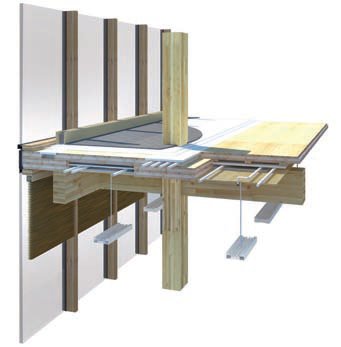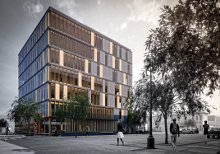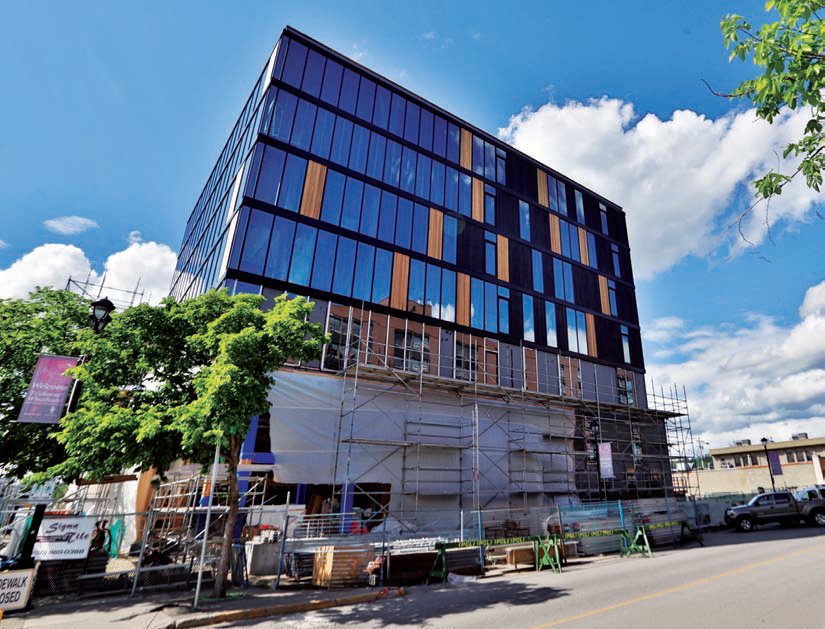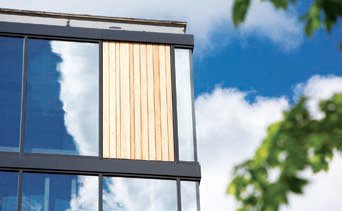The only way is up
18 August 2014The Canada Green Building Conference looked at the construction solutions timber could offer in an increasingly urban environment. Architect Peter Wilson reports.
Vancouver-based Michael Green is the current poster-boy architect for the Canadian timber industry and capable of not only making the case for greater use of timber in construction, but also leading the charge for change to regulations in the various provinces that currently mitigate against the widespread application of wood construction.
That much was clear from his presentation, 'Plant, Cut, Build, Repeat', at the Canada Green Building Council conference, a major event that shifts location between Toronto and Vancouver each June, with the former being the location for this year's assembly of more than 1,000 national and international construction industry professionals, manufacturers and suppliers committed to ways of building that use less or no energy and make more sustainable use of materials.
In emphasis of his theme that current legislation is too restrictive, Mr Green pointed out that Canada has more certified forest than all other nations combined and that trees in his native British Columbia grow to more than 33 storeys in height, so why persist with code limitations that restrict timber buildings to four storeys (now six in some provinces)? In this respect, North America might seem to be well behind the UK, where platform timber frame up to seven storeys is conventionally built and cross-laminated (CLT) timber structures, in London especially, are now moving beyond the nine storeys pioneered at the Stadthaus in Hackney's Murray Grove only a few years ago.
Mr Green is no slouch in this regard, however, having authored a major study entitled "Tall Wood" for FP Innovations (downloadable as a PDF) that indicated how commercial structures up to 20 storeys could be built from structural timber members and panels.
While some timber buildings of this height and above are currently at the planning stage in various countries around the world, Mr Green is busy completing the Wood Innovation and Design Centre for the University of North British Columbia, a nominally six-storey building in which double-height spaces take its actual height to 30m, thus justifying its appellation of "tallest timber building in north America".
True, the structure required site-specific permission for the use of timber to this height, but in discussing another of his projects, the Ronald McDonald House in Vancouver - four separate buildings that each house 18 families and in which all vertical walls are of CLT - Mr Green indicated that the building codes in Canada are currently being rewritten to facilitate greater use of this revolutionary structural panel product.
And with two CLT plants now up and running in British Columbia and Quebec, who is not to say that Canada will not begin to move beyond European advances in applying timber engineering and technology to new building construction?
And this perhaps is where organisations like the Canada Green Building Council offer lessons for professional institutions and trade bodies here in the UK. Far more than a talking shop, its annual conference is not only a celebration of all that is good, innovative and bar-raising in environmentally responsible building, but also an invaluable forum for challenging, as well as working with, government and other agencies to raise their own standards and expectations of the construction industry.
The importance of doing so is not to be underestimated: 80% of a global population of eight billion will live in urban situations by 2050 with commensurate housing and employment requirements. Responding to this massive and urgent building challenge requires us to think differently about construction, a global industry that has by far the largest carbon footprint of any sector.
Certainly, a few governments are giving some cognisance to this: the White House recently announced it is putting funding into the development of advanced wood products and tall wood buildings, albeit in a country whose government invests only 0.0001% of its GDP in built environment research. This commitment is but a drop in what will otherwise be a concrete ocean if the timber industry itself does not begin to see its role at the larger urban scale and invest in the development of new products and technologies to meet the demand that is unquestionably out there.
Describing innovation as being "the art of changing society's perceptions of possibility", Michael Green went on to articulate his belief that the world's most advanced building material is wood. While, like him, we all know this to be true, the clear and present need is to deliver its potential at the large urban scale.




